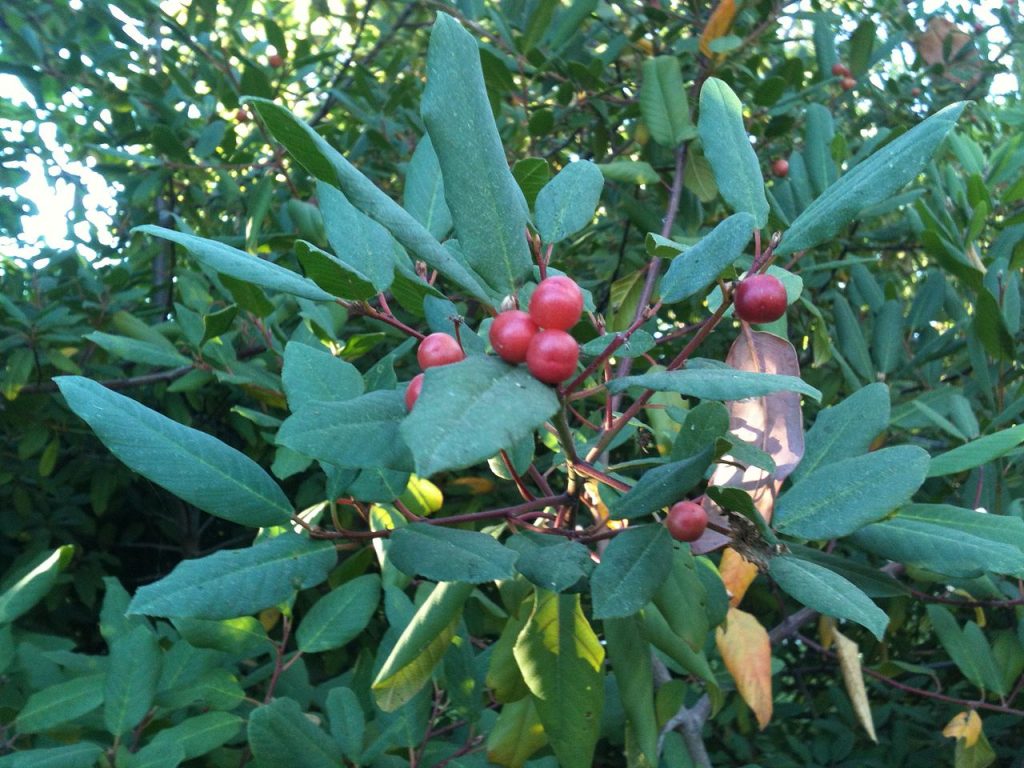
Native to California, southwestern Oregon, Arizona and Baja California, this large evergreen shrub grows in open woodland, brush canyon sides, and chaparral. It is a member of the buckthorn family, Rhamnaceae, that also includes California lilac, jujube tree, and crown of thorns. The plant grows 6-15′ tall and has gray to brown or reddish stems and shiny dark green leaves with a reddish tinge. The leaves are 1-3″ long and curl under on the edges during dry summers to conserve moisture. Axillary clusters of 5-60 small inconspicuous greenish-yellow flowers with 5 petals appear in early summer and give way to a juicy, berry-like drupe about 1/4″ wide, green, black, or red in color, and containing two smooth nut-like seeds that look like a coffee bean, hence the common name of the plant. The fruits are eaten by birds, deer, and bear. The plant provides cover for birds and browse for deer and livestock other than cattle. The flowers provide food for butterflies and bees. Very drought tolerant once established, California coffee berry is valued for xeriscaping and erosion control. In addition, it can be pruned into a hedge. The genus name Frangula comes from the Latin word, frangere meaning to brake in reference to its brittle wood. The specific epithet, californica, is the latinized form of California, an area where the plant is native.
Type: Evergreen shrub
Outstanding Features: Fruit, foliage
Form: Mounding, rounded, spreading (depending on the location)
Growth Rate: Moderate
Bloom: Clusters of small greenish-yellow flowers in early summer
Size: 6-15′ H x up to 5-15′ W
Light: Full sun to light shade
Soil: Sandy, dry, well-drained
Hardiness: Zones 7-10
Care: Low maintenance but can be pruned if desired
Pests and Diseases: None of significance
Propagation: Seed (3 months stratification if stored), cuttings
Outstanding Selections:
‘Eve Case’
‘Leatherleaf’
‘Mound San Bruno’
Photo Credit: Brofri Wikimedia Commons